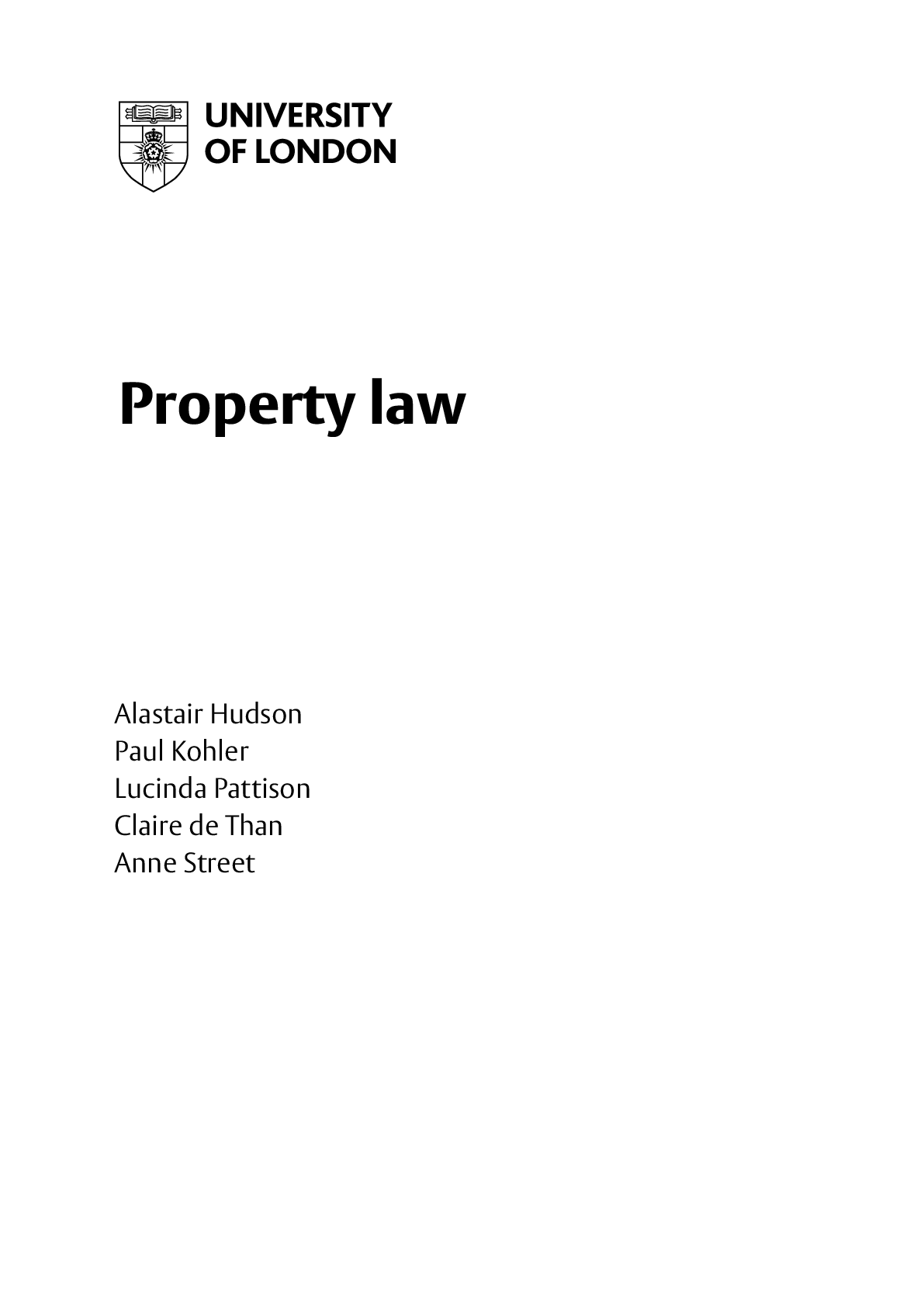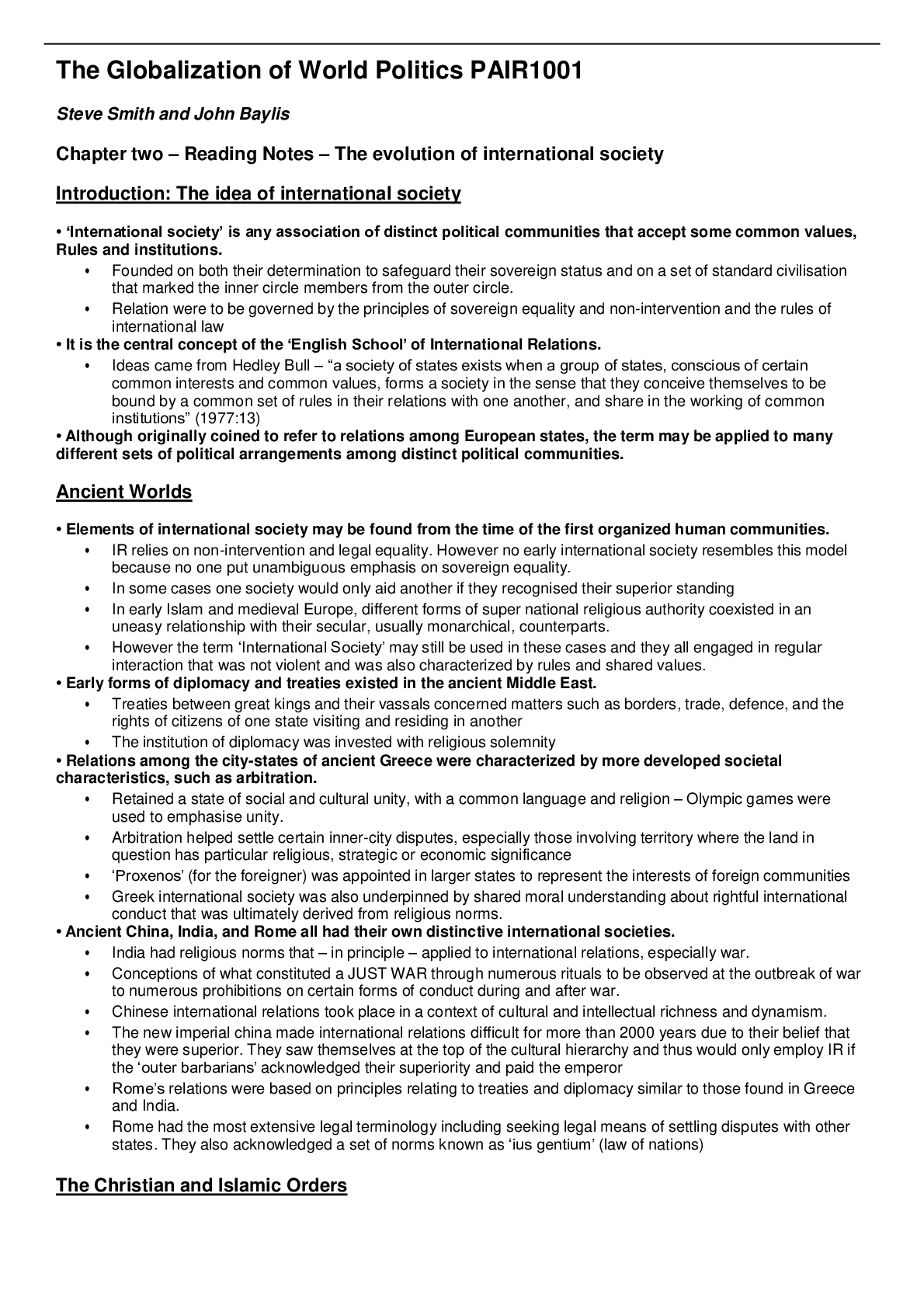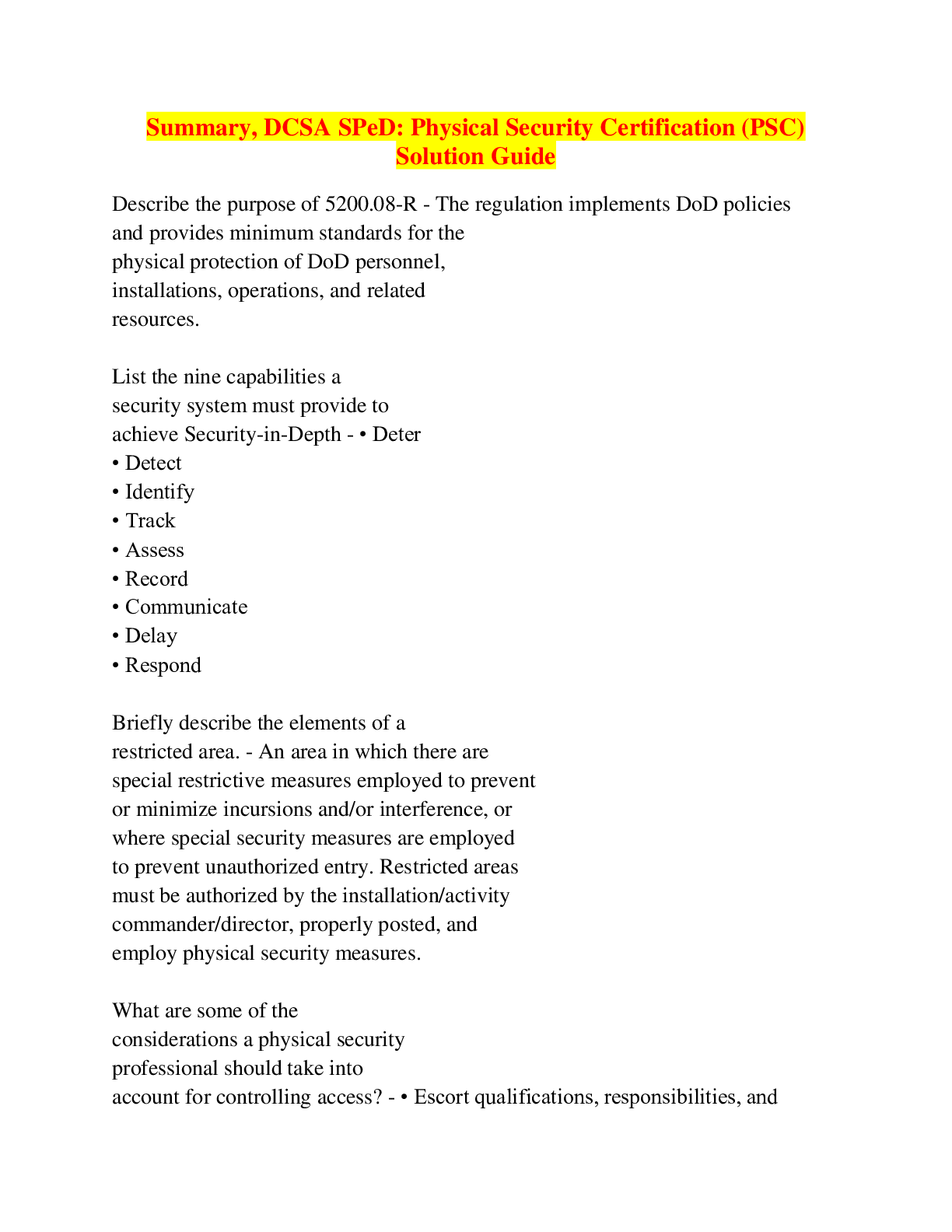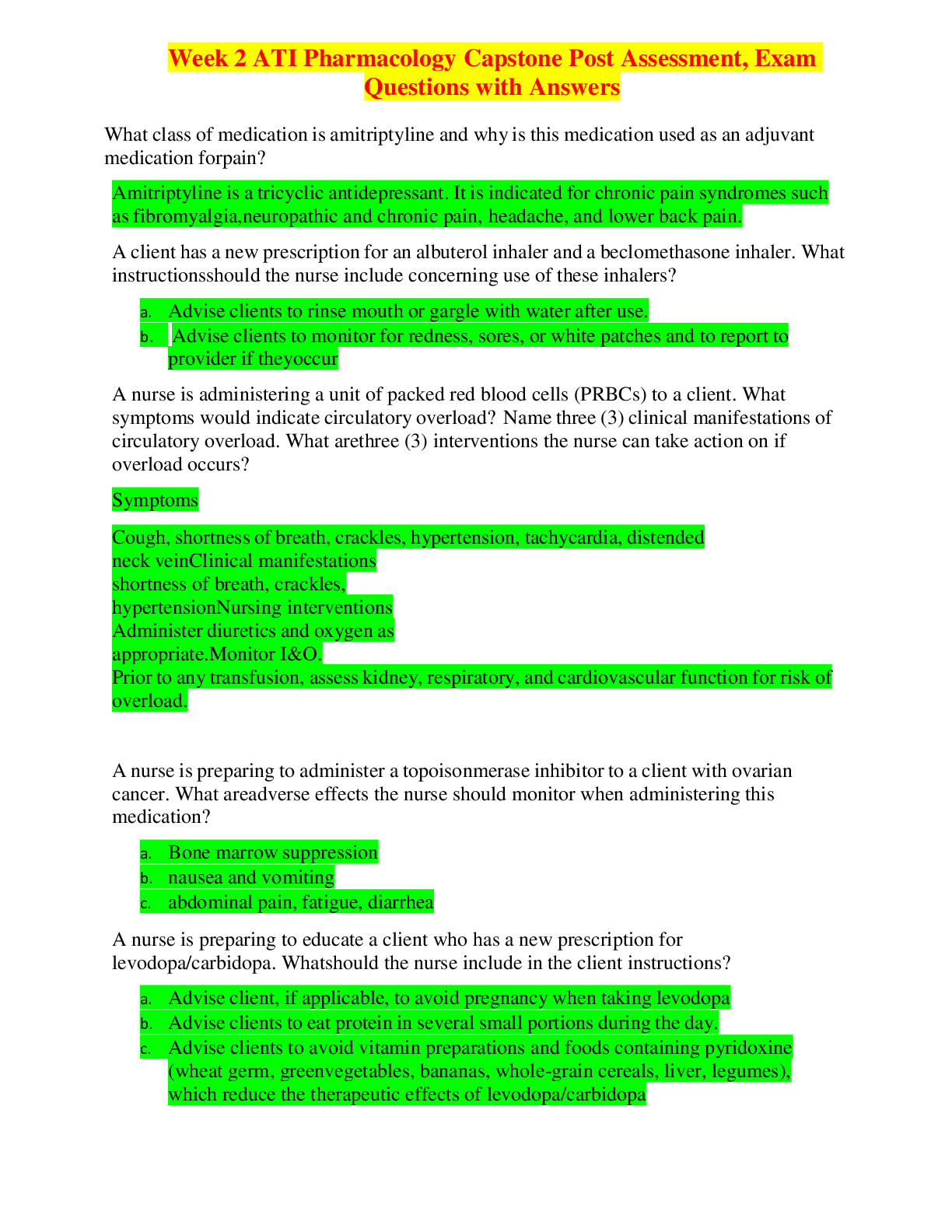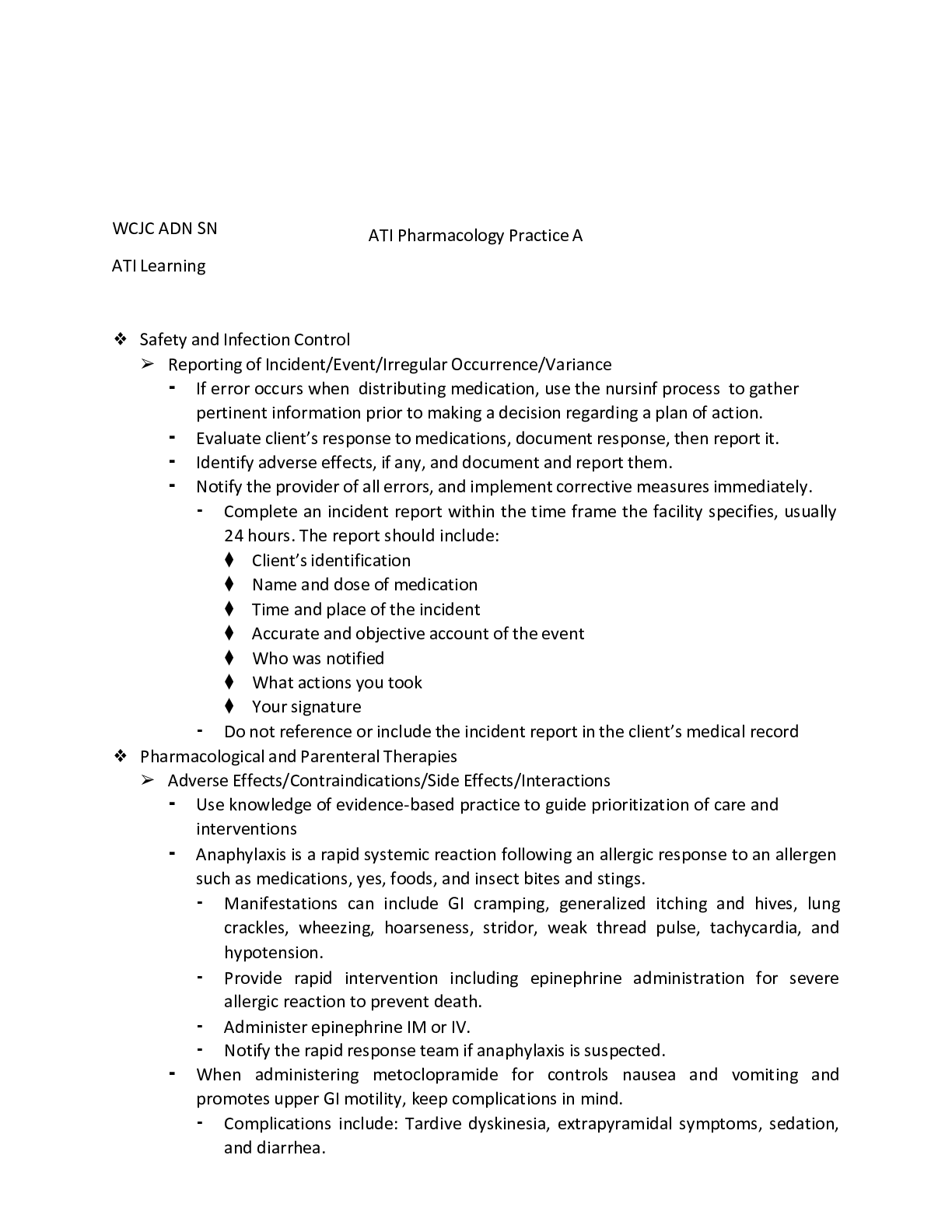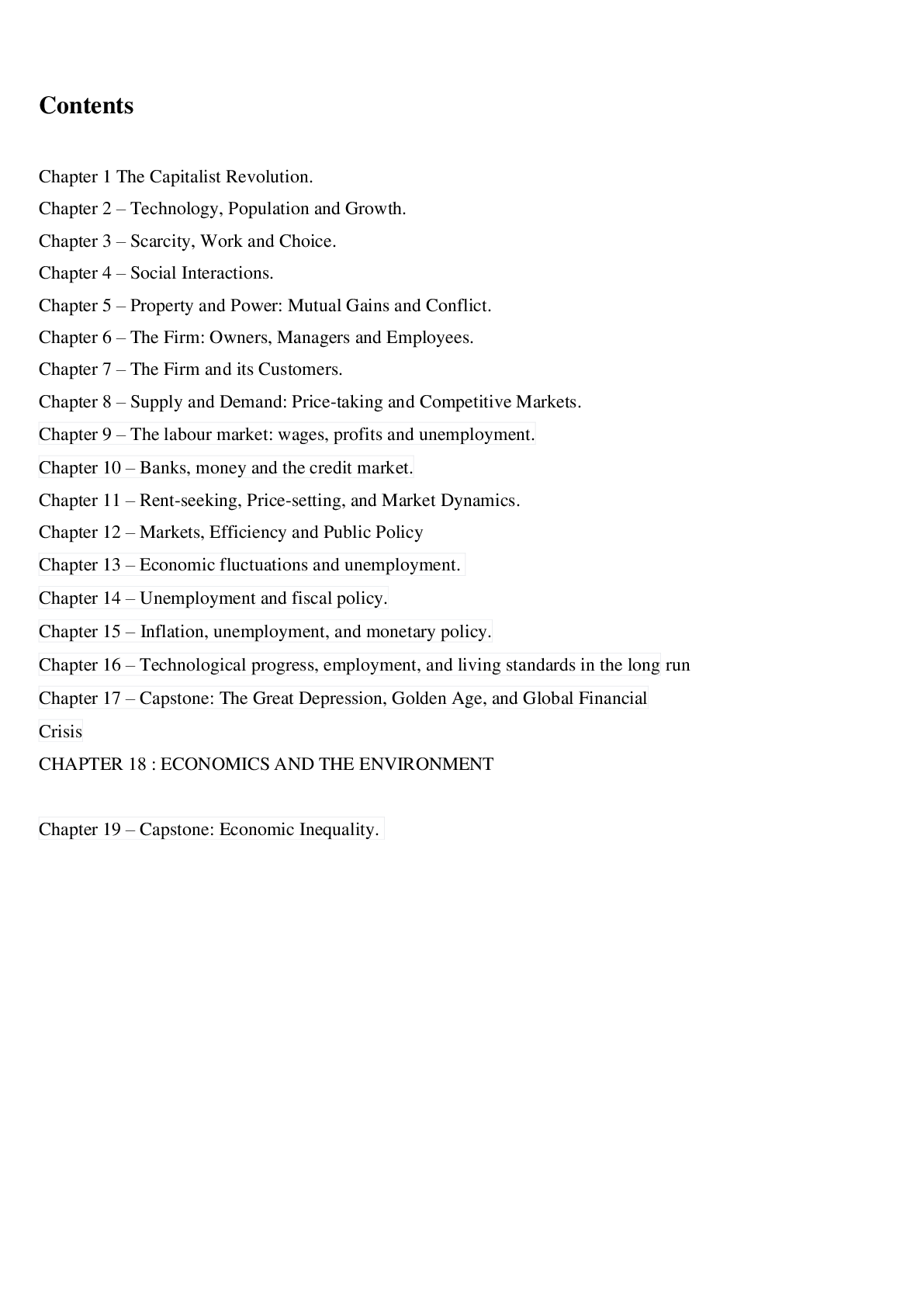*NURSING > Summary > WALDEN UNIVERSITY NURS 6521N, Mid Term Study Guide (1) with names and answers.docx. COMPREHENSIVE SU (All)
WALDEN UNIVERSITY NURS 6521N, Mid Term Study Guide (1) with names and answers.docx. COMPREHENSIVE SUMMARY & STUDY GUIDE . GRADED A DOC. 59 PAGES
Document Content and Description Below
Mid-Term Summary & Study Guide: September 2019 NURS-6521 o 100-question Exam which will assess your knowledge on the Learning Resources from Weeks 1-6. o Time limit of 2 hours. o Multiple choice o ... r multiple selection. o Due on October 14, 2019 1:59:00 AM EDT. Pharmacokinetics: Understand the implications of changing renal function on creatinine and drug dosingo Some drugs have special decreased doses or different dosing schedules for those with renal impairment (renal dosing) o For drugs that are toxic to the kidneys, a routine urinalysis and serum creatinine or creatinine clearance should be done o Renal excretion is significantly reduced at birth, so drugs primarily excreted by the kidneys should be given in lower dosages or longer dosing intervals o Kidney disease can reduce drug excretion, causing drugs to accumulate in the body o In older adults, renal function is assessed by creatinine clearance, not serum creatinine Creatinine levels do not adequately reflect kidney function in older adults because the source of serum creatinine—lean muscle mass—declines in parallel with the decline in kidney function. o Drug accumulation secondary to reduced renal excretion is the most important cause of adverse drug reactions in older adults. o Renal function should be assessed regularly when using drugs that are eliminated primarily by the kidneys What is the impact of the following on drug levels and dosing: Cirrhosis- Liver disease can cause drugs to accumulate because the liver is the major site for drug metabolism In patients with hepatic impairment, drug dosages need to be reduced or discontinued to prevent drug toxicity Some drugs have special decreased doses or different dosing schedules for those with hepatic impairment (hepatic dosing) Liver enzymes may need to be checked periodically for drugs that can cause liver damage o Protein binding- plasma albumin is the main protein that drugs can bind with drug binding to albumin is reversible making drugs bound and unbound( free) free means circulating in blood the percentage of drug molecules that are bound determines the strength of the attraction between albumin and drug Example- coumadin creates a strong bond causing 99% of the drug to be bound and 1% to be free( unbound) Gentamycin and albumin creates a weak bond leaving 90% open 10% bound Consequences of bound drugs that they restrict the ability reach their site of actions or are metabolized because albumin is to large leave the bloodstream; once bind are broken the drug leaves the circulation. Albumin has minimal site that drugs can bind; drugs will compete for the receptors to bind with may causing an increased intensity of medication and depending on the medication cause toxicity o Drug interactionsDrugs produce effects by interacting with other chemicals( receptors) they produce the effects of the drugs- it is usually reversible The binding to the receptor either blocks or mimics or increase/decrease the physiological activity of that receptor Selectivity is the ability to elicit only the response for which a drug is given The drug only reacts with one receptor type regulated a few processes and effects are limited. Receptors are like a lock and key only certain drugs bind to specific receptors Simple occupancy theory The intensity of the drug is proportional to the number of receptors occupied by that drug The maximal response will occur when all receptors have been occupied Modified occupancy theory Affinity refers to the strength of the attraction between drug and receptor High affinity are strongly attracted to their receptors low affinity is weakly attracted Potency – causes a strong attraction to receptors drugs with high affinity can bind with receptors when present in low concentration Intrinsic activity refers the ability of the drug to activate the receptor after binding Medications with high intrinsic activity have maximal efficacy An intense receptor activation causes intense responses o Half-life- The actual amount of drug that is lost during one half-life depends on the amount of the drug present in the body. Half-life refers to a percentage (50%), not an amount. Example: Morphine has a half-life of 3 hours. This means that the drug level of morphine will decrease by 50% every 3 hours, regardless of the amount in the body. If there are 50 mg of Morphine in the body, 25mg will be lost in 3 hours. *The half-life of a drug determines the dosing interval. For drugs with a short half-life, the dosing interval must be correspondingly short. If a long dosing interval is used for a drug with a short half-life, drug levels will fall below the minimum effective concentration (MEC) between doses, and therapeutic effects will be lost. (MEC) =defined as the plasma drug level below which therapeutic effects will not occur. o Routes of Administration and Dosage Forms: Understand the different routes of administration and dosage forms and some of the challenges and benefits associated with these routes and forms.- IV- Barriers to absorption: none, absorption is instantaneous Advantages: rapid onset, precise control over drug levels, permits use of large fluid volumes/irritant drugs Disadvantages: irreversible, expensive, inconvenient, not suited for self-administration, risk for fluid overload, infection, and embolism, drug must be water soluble IM- Barriers to absorption: Capillary wall, absorption is rapid with water soluble drugs and slow with poorly soluble drugs Advantages: permits use of poorly soluble drugs and depot preparations Disadvantages: possible discomfort, inconvenient, potential for injury subQ- Barriers to absorption: Capillary wall, absorption is rapid with water soluble drugs and slow with poorly soluble drugs Advantages: permits use of poorly soluble drugs and depot preparations Disadvantages: possible discomfort, inconvenient, potential for injury PO- Barriers to absorption: Epithelial lining of GI tract; capillary wall, absorption is slow and variable Advantages: easy, convenient, inexpensive, self-medication, potentially reversible, safer than parenteral routes Disadvantages: variability, gastric acid and digestive enzymes may inactivate some drugs, N/V from local irritation, patient must be conscious and cooperative Transdermal- Barriers to absorption: epidermis, dermis Advantages: provide the highest medication absorption, prolonged duration of action, useful for potent drugs, reduction of adverse effects Disadvantages: possibility of irritation at the site of application, limitation on drugs that can be delivered in this manner, creates increased risk for toxicity in infants Inhaled: Barriers to absorption: lung surfactant, surface lining fluid, epithelium, interstitium and basement membrane and the endothelium. Advantages: therapeutic effects are enhanced by delivering drugs directly to their site of action, systemic effects are minimized, relief of acute attacks is rapid Disadvantages: many variables can affect the dose of the drug delivered to the airways, determination of the true dose is difficult, patients need professional guidance on the proper use of inhalation devices, practitioners can be confused by the number of device types and the variability of use. Understand when it is OK to crush (or not crush) certain dosage forms and why. There are multiple reasons for crushing tablets or capsule contents before administering medications, but there are numerous medications that should not be crushed. These medications should not be chewed, either, usually due to their specific formulations and their pharmacokinetic properties. Most of the no-crush medications are sustained-release, oral-dosage formulas. The majority of extended-release products should not be crushed or chewed, although there are some newer slow-release tablet formulations available that are scored and can be divided or halved (e.g., Toprol XL). A common reason for crushing a tablet or capsule is for use by a hospitalized patient with an enteral feeding tube. A recent review in the American Journal of Health-System Pharmacy provides more details about administering medications in patients with enteral feeding tubes. Oral solutions can be used when commercially available and medically appropriate. If an oral solution or suspension is not available, the hospital pharmacy should be consulted to determine if a liquid formulation of the product can be extemporaneously prepared. In some cases, after careful consideration of compatibility, stability, and drug absorption changes, an injectable formulation of a product may be used. Generally, meds that should not be crushed fall into one of these categories: Sustained-release tablets, which can be composed of multiple layers for different drug release times, as can beads within capsules. Some of the more common prefixes or suffixes for sustained-release, controlled-release, or controlled-delivery products include: 12-hour, 24-hour, CC, CD, CR, ER, LA, Retard, SA, Slo-, SR, XL, XR, or XT. Enteric-coated tablets, which are formulated because certain drugs can be irritating to the stomach or are degraded by stomach acid. By enteric-coating tablets or capsule beads, the drug’s release can be delayed until it reaches the small intestine. Prefixes include EN- and EC-. Other medications have objectionable tastes and are sugar-coated to improve tolerability. If this type of medication is crushed, the patient would be subject to its unpleasant taste, which could significantly impair medication adherence. Additionally, both sublingual and effervescent medications should not be crushed because it will decrease the medication’s effectiveness. Which routes of administration have the fastest and slowest rates of absorption? IV- fastest. Instantaneous absorption. SQ/IM- rapid with water soluble drugs. Slow with poorly soluble drugs. Enteral/oral: slow and variable. o Know the relative onset, monitoring and appropriate use of various dosage forms including: Patches (ie; fentanyl, rivastigmine)- Fentanyl transdermal patch, opioid analgesic for chronic severe pain. Agonist-analgesic of opiate receptors, inhibits ascending pain pathways. Systemic absorption continues even after removal of patch, 20-27hours for serum concentrations to fall 50%. Onset is 6hours, lasts 72-96 hours, most often prescribed to change the patch every 72 hours. Metabolized by liver. Rivastigmine patch for Alzheimer’s dementia, change patch every 24hours, may titrate dose up after a minimum of 4weeks of toleration. Acetylcholinesterase inhibitor that causes increase in concentration of acetylcholine to enhance cholinergic neurotransmission. Half life 3 hours, lasts 24hours in patch form, peaks at 8hours. Transdermal nitroglycerin for angina pectoris, onset is 1 hour, lasts 10-12 hours, half life is 12-33 minutes. Organic nitrate that causes systemic venodilation, decreasing preload. Buprenorphine for chronic severe pain, worn for 7 days each, cautious w/hepatic impairment, 17hours for effect, half life 26hours. Suppositories (ie; acetaminophen)- Glycerin suppositories lubricate and cause reflex rectal contraction to assist in having a bowel movement. Bisacodyl suppositories stimulate peristalsis and soften feces by increasing secretion of water and electrolytes into the intestine and decreasing water and electrolyte absorption. Acetaminophen suppositories can be used for patients who are vomiting, not tolerating PO, or patients who are unresponsive and need treatment for fever. It is commonly used for children. Onset of acetaminophen suppository is about 1 hour, lasts 4-6 hours, half life 2-5 hours, 4-10 hours for neonates. Metabolized by liver, excreted in urine. Aspirin can also be giving rectally, onset is 4- 5 hours, half life 4.7-9hours. Budesonide rectal form for ulcerative colitis, a glucocorticoid. Hydrocortisone rectal for ulcerative proctitis, absorption is limited, onset is 5-7 days. Phenylephrine rectal suppository for hemorrhoids, short duration, may use up to 4 times per day. o Sublingual tabletso Tabletso Liquid (know common measures)-SEE BOTTOM OF PAPER o Injectables- SEE BOTTOM OF PAPER o Sublingualo Nasogastrico Elixir (contains alcohol)- Therapeutics: Gastrointestinal, Cardiac, Respiratory, Pscyh, Neurology, Musculoskeletal Understand the mechanism of action, side effects, appropriate use and contraindications for the classes of drugs and individual drugs listed below. Also, know the key patient education points including cautions, expected effects, and appropriate use (with food, empty stomach, etc.). Anti-diarrheals ( diphenoxylate HCl with atropine sulfate, loperamide, bismuth subsalicylate)- Antidiarrheals- Fall into two groups 1) Specific (treat underlying cause, anti-infective drugs and drugs to treat malabsorption) 2. Non-specific (act on or influence the symptoms and do not treat underlying cause). The following treat Non-specific diarrhea. Opioids Used to treat Non-specific diarrhea: The activation of receptors decreases secretion of fluid into the small intestine and increases absorption of fluid and salt, thus presenting the large intestine with less water. Diphenoxylate HCL with Atropine Sulfate (LOMOTIL)- Is an opioid used only for diarrhea. The atropine dose added in Lomotil is subtherapeutic and is present to discourage abuse. Mechanism- Insoluble in water and cannot be abused by parental routes. Side Effects- NO significant effect on CNS, however if taken in high doses it can elicit typical morphine-like subjective effects. IF a severe overdose occurs Naloxone is the treatment. Constipation if overused. Contraindication- In patients with IBD, opioids may cause toxic megacolon. Key Education Points- If using to get euphoria from opioids, the addition of atropine will create unpleasant effects to discourage abuse. Use as directed, stop taking if not stooling. Loperamide (Immodium)- I [Show More]
Last updated: 3 years ago
Preview 1 out of 59 pages
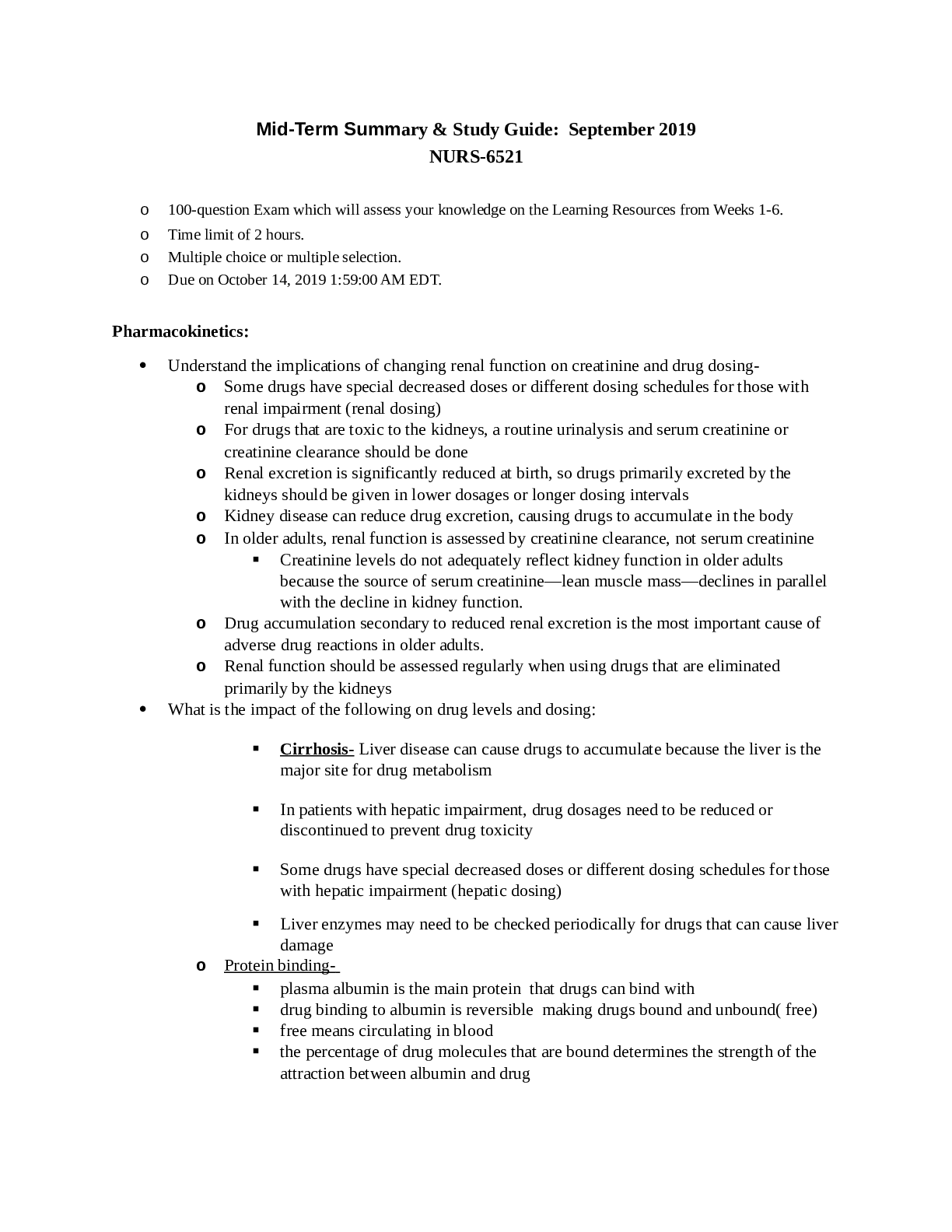
Buy this document to get the full access instantly
Instant Download Access after purchase
Buy NowInstant download
We Accept:

Reviews( 0 )
$14.00
Can't find what you want? Try our AI powered Search
Document information
Connected school, study & course
About the document
Uploaded On
Mar 19, 2022
Number of pages
59
Written in
All
Additional information
This document has been written for:
Uploaded
Mar 19, 2022
Downloads
1
Views
243


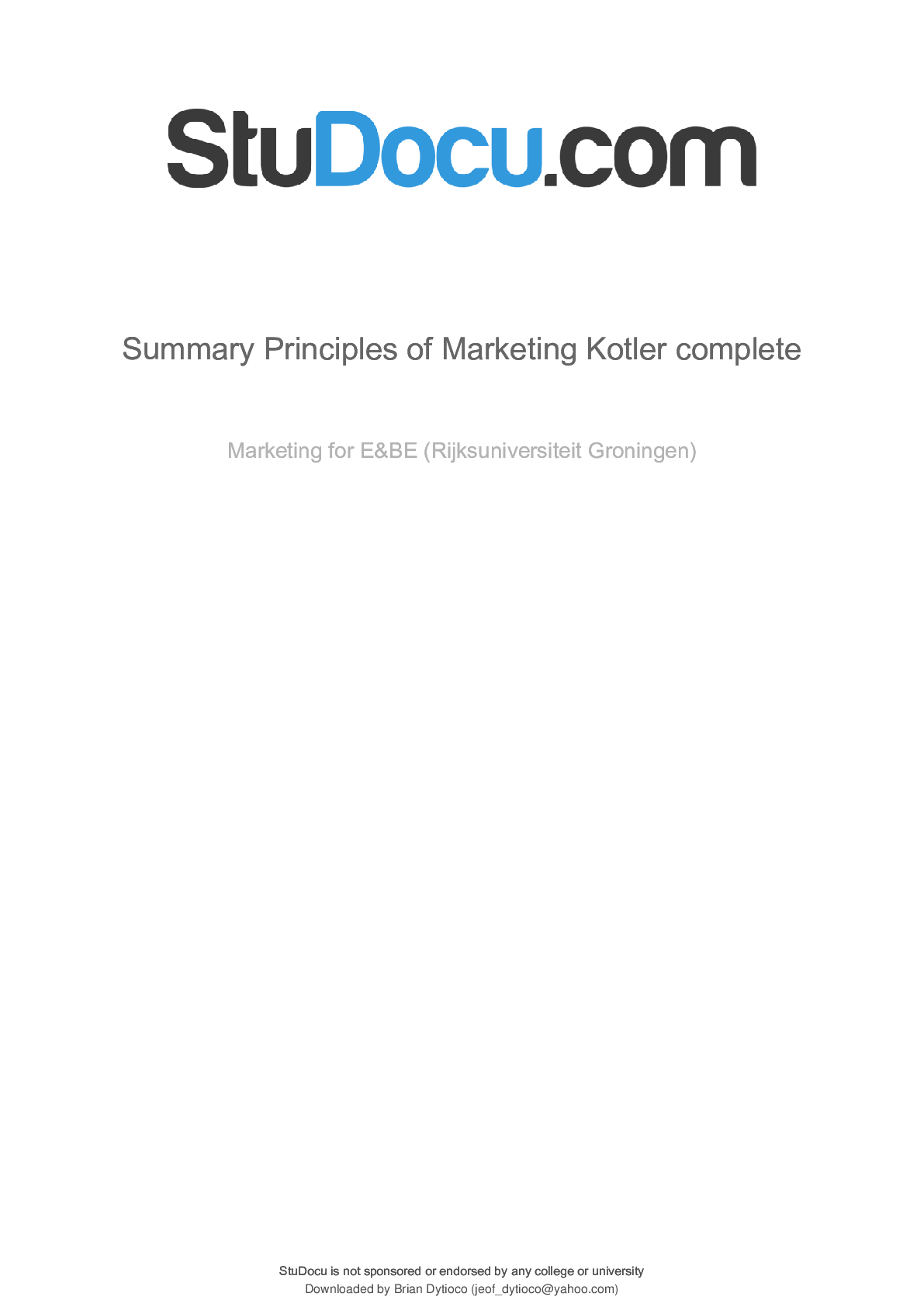
.png)




